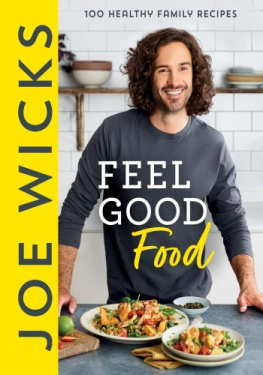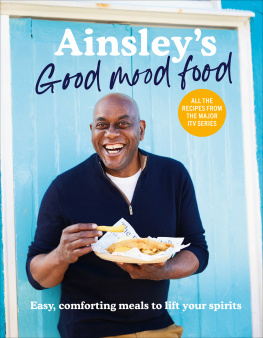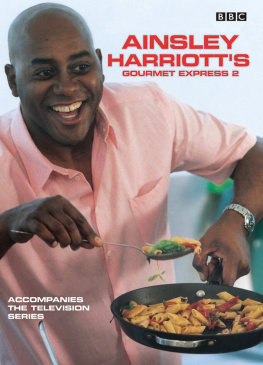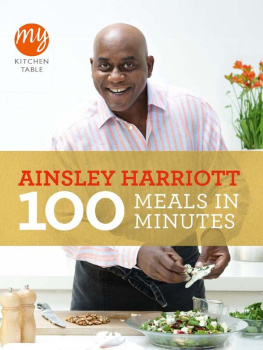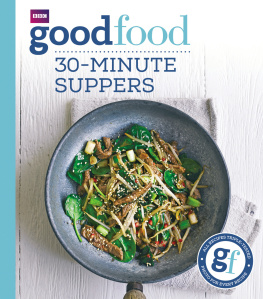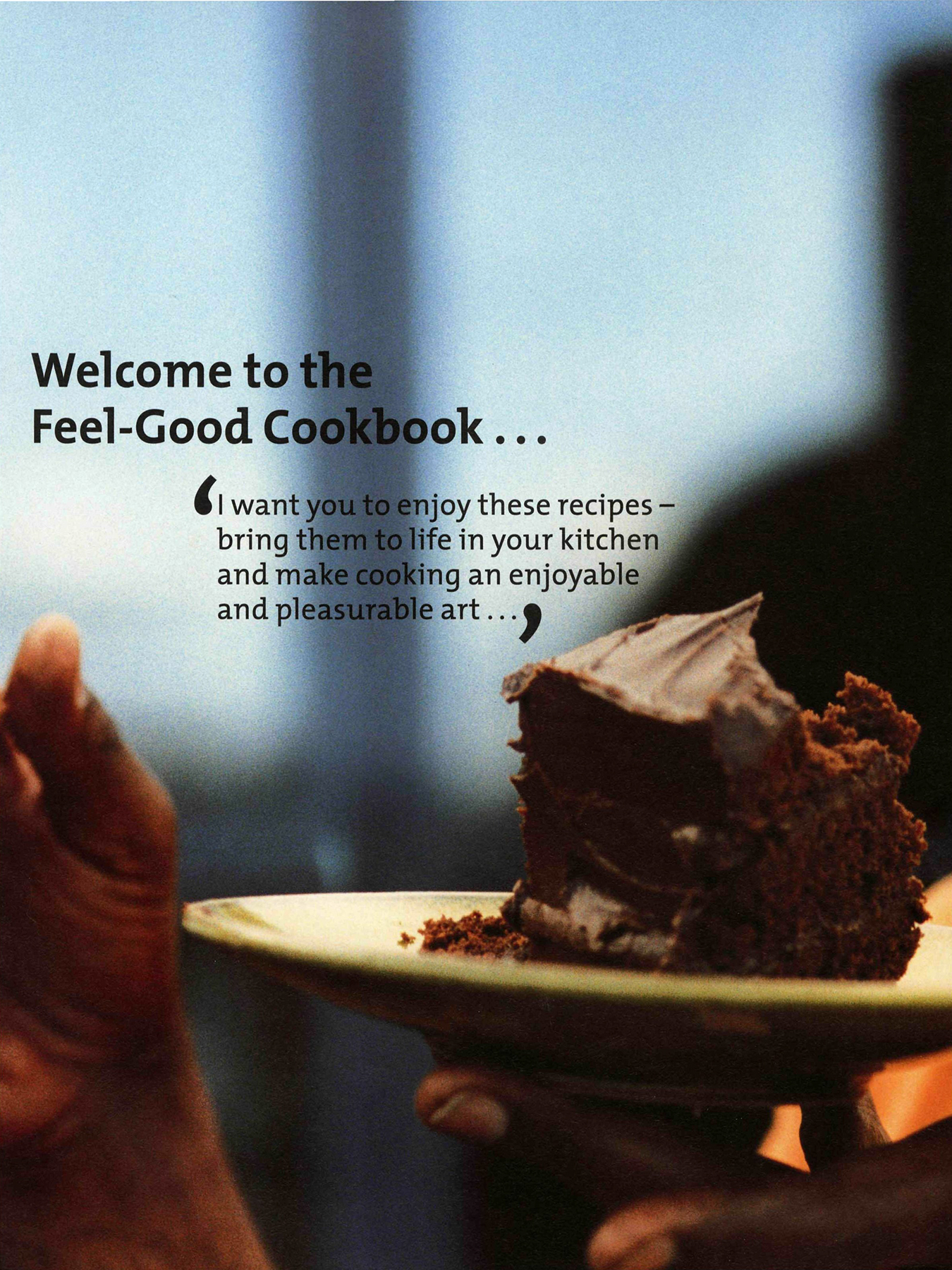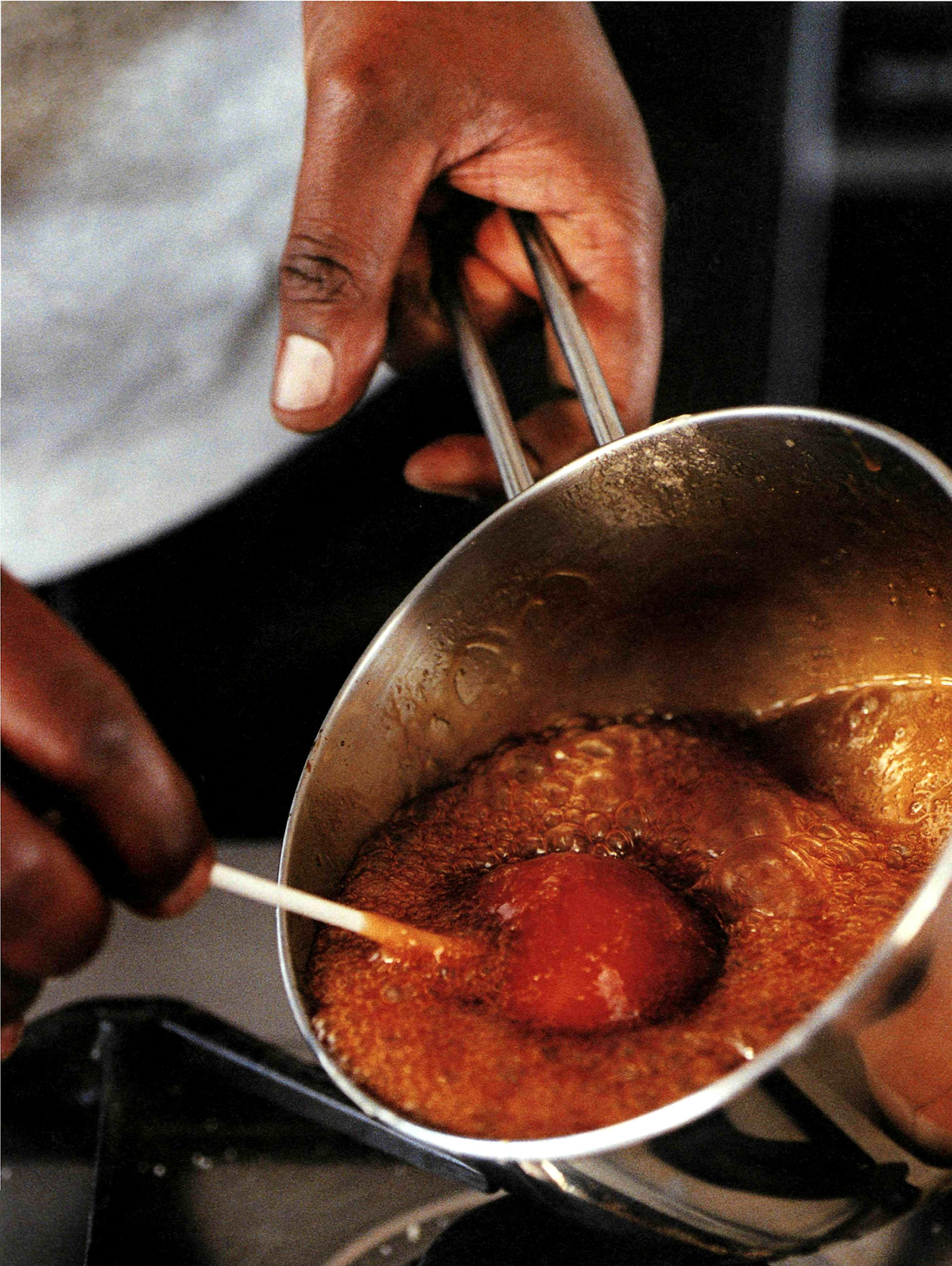Contents
About the Book
If there is one term that sums up Ainsley Harriotts approach to cooking its feel-good. From shopping for ingredients to preparing and eating a delicious, nourishing meal, every stage of the process is about pleasure, enjoyment and having fun. Its a simple philosophy, but one that captures the essence of why food is so much more than just a fuel for the body.
In this book Ainsley shares his enthusiasm for cooking and eating by creating 150 new recipes that will make you feel good. Youll find dishes that are good for boosting your energy, good for your health and your figure, good for having fun with, good for quick fixes and good for enjoying with friends.
The chapters are designed to help you find a dish for every mood or occasion, whether its fabulous breakfast ideas like Healthy Breakfast Bars to Go , simple midweek meals such as Grilled Trout Fillets with Saffron and Tomato Sauce , or impressive dishes for a weekend dinner, like Leg of Lamb Stuffed with Parma Ham, Apricots and Herbs. There are plenty of vegetarian options too, from Spaghetti with Sicilian Cauliflower Sauce to Camembert and Cranberry Puff Pastry Pyramids , and numerous salads, snacks, cakes and puddings.
As well as menu spreads for entertaining, there are tips on shopping for ingredients, combining textures and flavours and filling a store cupboard with the essentials you should never be without. And the mouth-watering food photography takes you right to the heart of feel-good cooking.
Encouraging us to indulge our senses, eat healthily and occasionally spoil ourselves, Ainsley Harriotts Feel-Good Cookbook shows us the full experience that food has to offer.
Welcome to the Feel-Good Cookbook
Do you know, its so interesting to discover things in life that actually make us feel good. Often its the quite simple things such as learning to ride a bike, making your first butterfly cupcakes or scoring your first goal. Or maybe its your first love, your first kiss, or getting your first pay cheque.
When I started working on this book, I spent a lot of time asking people to summarise what feeling good meant to them. Their answers ranged from wearing their favourite jeans again after the birth of their child, to broader examples, such as the love of their family and spending time with friends. As I started to put the book together, I realised that so many of our feel-good memories involve experience the more you try something, the better you become and the more rewarding it is.
Its almost the same in the kitchen: the more you do, the more experienced you become. And experimenting with wonderful produce and flavours becomes a way of life. I remember the first time I made the perfect souffl. To be honest, Id had a few mishaps along the way. However, I learnt a vital piece of feel-good information early on: a new broom sweeps clean, but an old broom knows the corners now the souffls rise perfectly every time! We shouldnt have to worry about the rules that can take the fun out of cooking. For example, I dont believe in being too strict with your diet and cutting out certain foods completely. Theres no point having a big portion of something with no taste; better to have a small portion, including all the food groups, that really tastes of something. You shouldnt deny yourself an indulgent treat such as my Chocolate heaven cake () theyre all feel-good foods in their own way.
Ive tried to structure the book so that you can find a feel-good fix for every occasion. This could be a much-needed brunch when you wake up after a big night out, or a simple snack when youve only got an hour to spare and dont want to resort to a supermarket ready-made meal. There are healthy balanced meals in chapters such as Quick and easy suppers and Substantial salads but, of course, there are also chapters for that something special, be it preparing an extravagant dish for a dinner party in Pushing the boat out or treating yourself to a comfort pudding. Youll find recipes that are good for your heart, good for boosting energy levels, good for your figure, good for having fun with, good for your soul, good for nights in and good for quick fixes. Anything that gets you going and really makes you feel your food!
How to use this book
Its amazing how much more aware of our food we are these days. You just need to walk around the supermarket and spot the people reading the backs of packets. Essentially, we all know what constitutes a healthy diet. For instance, I love to use a good olive oil when cooking its beneficial in lowering ones cholesterol levels and maintaining a healthy heart, and new research suggests its an anti-inflammatory, too. Im also very aware that we all need to reduce our daily salt intake the average adult is eating 50% more salt than they should per day 9.5 g instead of the recommended 6 g.
Having said that, you wont find any nutritional guidelines or analysis next to these recipes because feel-good cooking is all about listening to what your body is telling you and what your clothes are telling you! Its about applying a little common sense and getting the balance of your diet just right.
Ive tried to make the chapters reflect our lifestyles, offering you new and exciting ways to spice up your meals throughout the day. In each chapter youll find a few starting points to help you along with the feel-good philosophy whether its tips about creating a good atmosphere or where to source good ingredients.
There are also ideas for grouping recipes together and creating a themed menu for entertaining guests. These can be found .
Look out for the Good for boxes in the book which highlight aspects of the recipes that are particularly good for things such as your figure or your wallet.
Essentially, I hope youll flick through, be encouraged to adapt the recipes to fit your needs and be ready to tackle any feel-good dish that inspires you. And believe me, youre about to be inspired by this scintillating photography.
General guidelines for recipes
All preparation and cooking times are approximate.
The recipes supply metric and imperial measurements, but try not to mix and match.
The recipes suggest using an all-purpose olive oil for cooking and extra-virgin olive oil for making salad dressings or marinades.
As brands of salted butter vary, it is important to use unsalted butter where specified, especially for baking recipes.
All teaspoon and tablespoon measurements are level unless stated otherwise.
Recipes made with raw or lightly cooked eggs should be avoided by anyone who is pregnant or in a vulnerable health group.
Cooking and your senses
We get so much out of our food! Each of our taste buds contain 50100 receptor cells that send nerve impulses to our brain and really get us enthused. But to enjoy the full flavour of a Sunday roast or a chocolate mousse, you need the full sensory experience.
Its only when we pay attention to all of our senses that we get to know ingredients better and judge for ourselves what combinations of foods will provide a healthy balanced diet. Like every part of our body, our senses need a good workout so get in there, get involved with the food and find out what you like.


